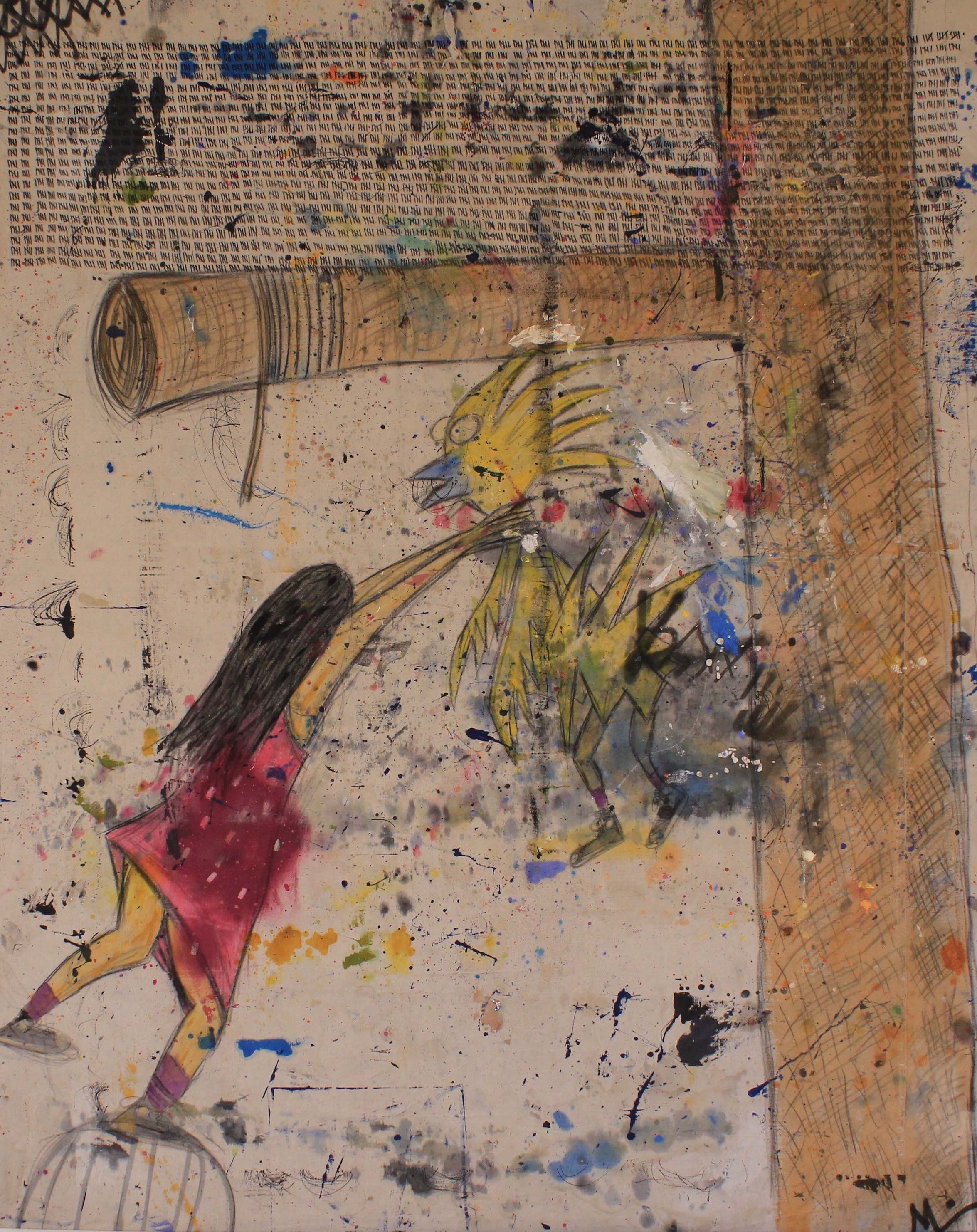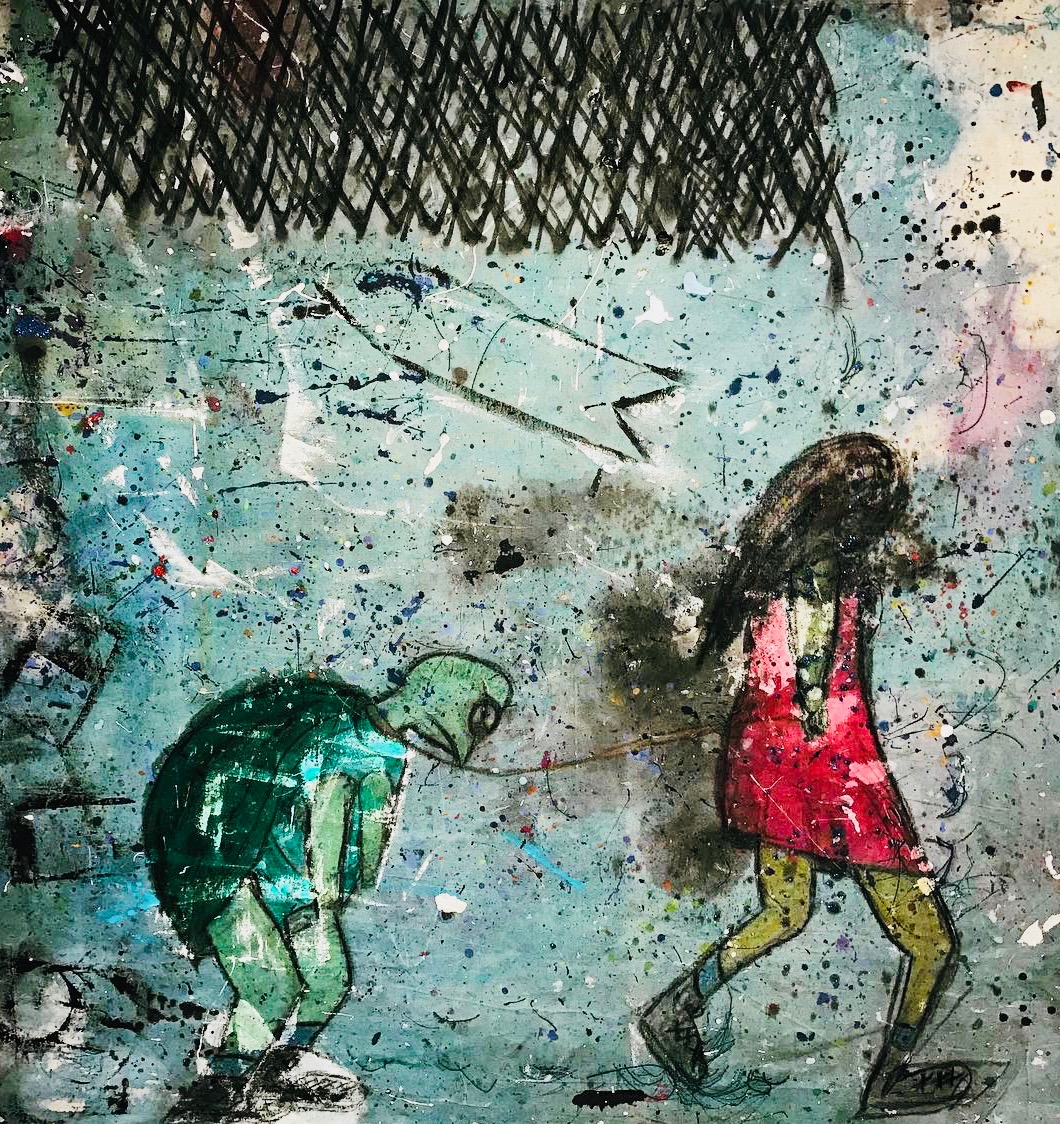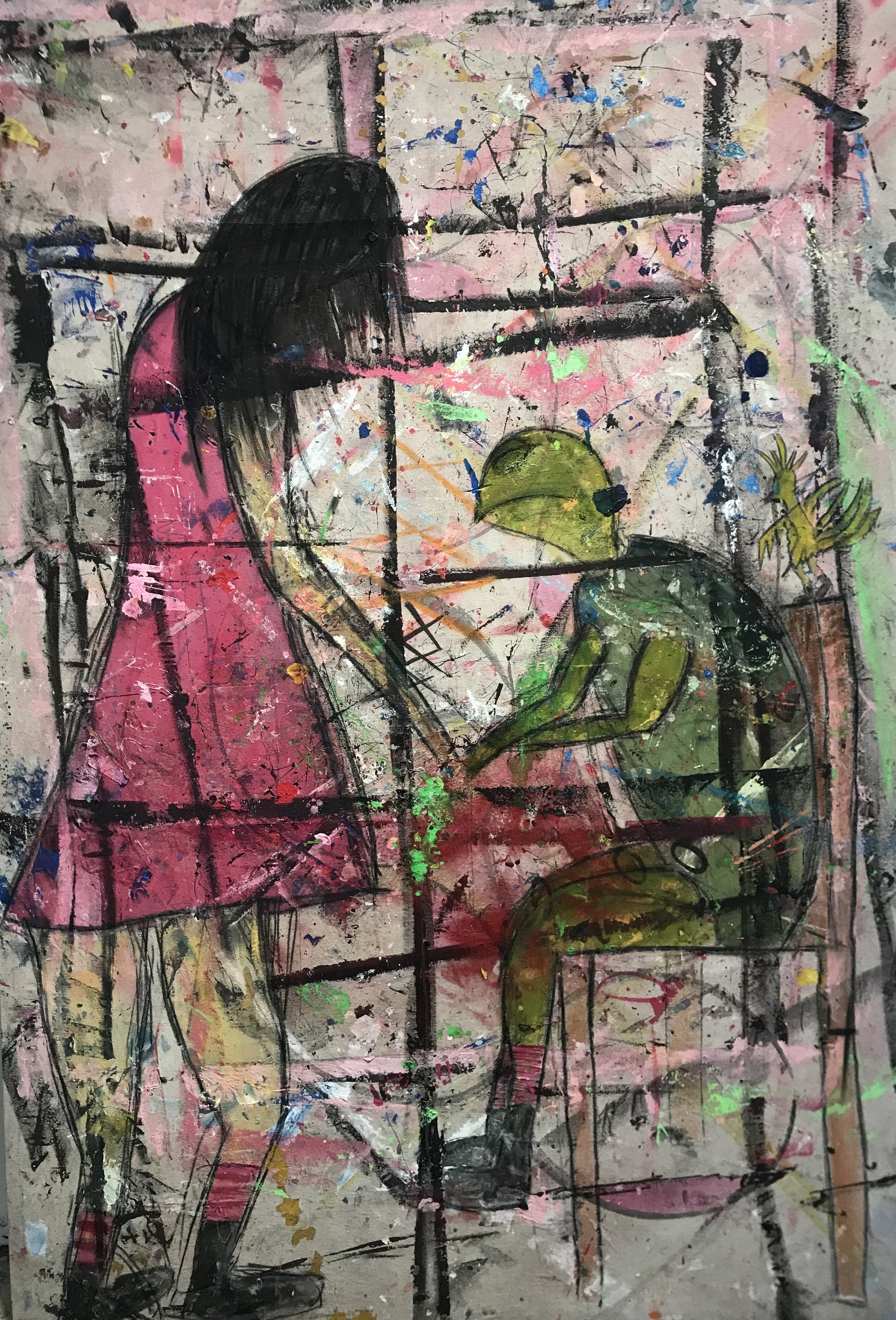Mike Collins: The Funeral Party
Meet LA-based artist, psychologist + ShockBoxx Gallery owner Mike Collins. Collins has been working tirelessly on his upcoming solo show, The Funeral Party, opening at ShockBoxx on Saturday, March 23. The dark, massive pieces, constructed of any material Collins could get his hands on, are inspired by his personal struggles with alcoholism + have The Cure references dispersed throughout. As for ShockBoxx, Collins has played a pivotal role in the resurgence of the art community in Hermosa Beach, curating numerous solo + group exhibits at the gallery over the past two years. We sat at ShockBoxx to chat with Collins about the show, the characters in his pieces + The Cure. You’ll have to check out the opening for yourself to see the full series. Oh, and you might even catch a handmade coffin in attendance.
Asymmetric Magazine: Congrats on your solo show The Funeral Party. Can you tell us what the show is all about?
Mike Collins: About ten years ago, I started making paintings related to my relationship with alcohol, alcoholism and my recovery of now 22 years. They were paintings that I just kept around the house or showed a few people, but I never put them out. A little over a year ago, we were doing a show here at ShockBoxx about addiction, and I put a piece down on drop cloth on the floor. I was actually letting people walk over the top of it. Then Amber Goldhammer had a show going on in here, and she saw it and was like, ‘Dude, what’s up with that? You should stretch it.’ So, I took her advice, stretched it and put it on the wall. The piece had a different life when I took it seriously. When we opened ShockBoxx, my art was stuck, and I totally hit a wall. I was curating so many shows that it would get in my head. I was seeing so much great art, and when I went to work on my own art, I was confused. I was searching for my voice. I went back to my old work, and I started adding characters. That’s what it came from; I just wanted to give it a different life. Out of everything I’ve ever done, this show is so raw. I feel so vulnerable.
AM: You mentioned the characters in your work. What’s the dynamic of the girl in the pink dress and the yellow bird?
MC: The girl in the pink dress and the yellow bird were the original characters from my older work. To me, they show the relationship between an alcoholic and alcoholism or a drug addict and the phenomenon of addiction and how they’re intertwined. When you first get sober, it’s you against the addiction. As you grow and change, you realize that the obsessiveness, drive and stubbornness that it takes to become a drug addict or alcoholic isn’t necessarily a bad thing. A lot of the same traits that led me to becoming an alcoholic are skills that, once you remove the alcohol, have benefitted me. So, that’s what they represent.
A lot of the same traits that led me to becoming an alcoholic are skills that, once you remove the alcohol, have benefitted me.
AM: What about the turtle?
MC: I think the turtle is the most vulnerable character to me now. The first time I painted it, I wanted to use the turtle to represent the part of me—and I think a lot of people—that’s just always a little late to the scene. You’re trying to make a change in your life or say something that’s difficult to say or show up emotionally for something, or you have a phobia that keeps you from doing something. You finally get there, and you’re too fucking late. If you think about a turtle, like the whole 'The Tortoise and the Hare’ story, the turtle is probably moving as fast as it can. I don’t think turtles are lazy or go slow on purpose; they might be hauling ass. So, The Funeral Party is where the turtle shows up. I really wanted to paint the turtle in relation to the girl in the pink dress, who is the addict. The turtle is that part of us that’s fighting as hard as we can to get through whatever we need to get through in our lives.
AM: What about the X’s that are used throughout a lot of your pieces?
MC: The first time I put X’s on something, I was crossing something out. It was literally just a ‘no’, and that piece was probably going to get painted over. But I really liked them. Now I use the X’s to signify the stuff we don’t want people to see, the stuff we don’t say, or the stuff we don’t want people to know we say.
AM: Are there any other themes you pursue in your work?
MC: I pursue emotion in my work, and not that I’m chasing one, but that I’m trying to get one out. There’s never a painting I’ve done where I’m just happy—like painting a happy ocean or sunset. There’s always some agitation in what I’m painting. That doesn’t mean I’m angry and want to show I’m angry, but there’s this manic feeling when it comes to what I want to paint. Sometimes I’ll get an idea, but the motivation isn’t there, and it’s not going to happen. But when it happens, it happens. Things will roll around in my head, whether it be a song lyric, a word or a phrase, and then it will come to me. I always turn on Plainsong by The Cure when I paint, and there’s always a sense of hypomania to my work. That’s what’s been fun about The Funeral Party work—most of it is on really large drop cloth, so the majority of the painting happened on my hands and knees on the ground. I’ve also been using a lot of charcoal stick, and I love that it gets all over the place. Once I get that emotion out, it’s over.
AM: Speaking of The Cure, you named the show The Funeral Party after The Cure song, right?
MC: Yeah. The Funeral Party isn’t necessarily one of my favorite Cure songs sonically, but I love the lyrics. They really fit with the work, especially because my friend made a coffin that I worked into the show. The opening of the song starts with ‘two pale figures’, and in my mind, the song is about two people who died together or at least are buried together to live in eternity. That speaks to the alcoholic and the drug addict; they’re going to live for eternity with whatever their affliction is.
AM: What music are you listening to right now?
MC: The Cure always. And a lot of Sturgill Simpson. He has an album called Metamodern Sounds in Country Music, and it’s the most existentially relevant music for me right now. I was at the Outlaw Music Festival where he was on the lineup, and he completely stole the show. It blew my mind. Also, anything Conor Oberst touches is always in heavy rotation, including Better Oblivion Community Center. When Bright Eyes played the Disney Concert Hall during the Cassadaga album, it was one of the most artistic moments I’ve ever seen in my life. They were wearing these white suits, and they devolved as the show went on—ties came undone, and they started smashing instruments. I just love when somebody like Conor Oberst can stand on a stage and be so vulnerable. That’s where music collides with me making art—the willingness to be so vulnerable. That shit is real.
photo by Kat Monk
AM: So, what’s next for you and ShockBoxx?
MC: That’s a really good question. We’re excited to figure out what’s next and plan some more shows.
See more from Mike Collins at shockboxxproject.com.








